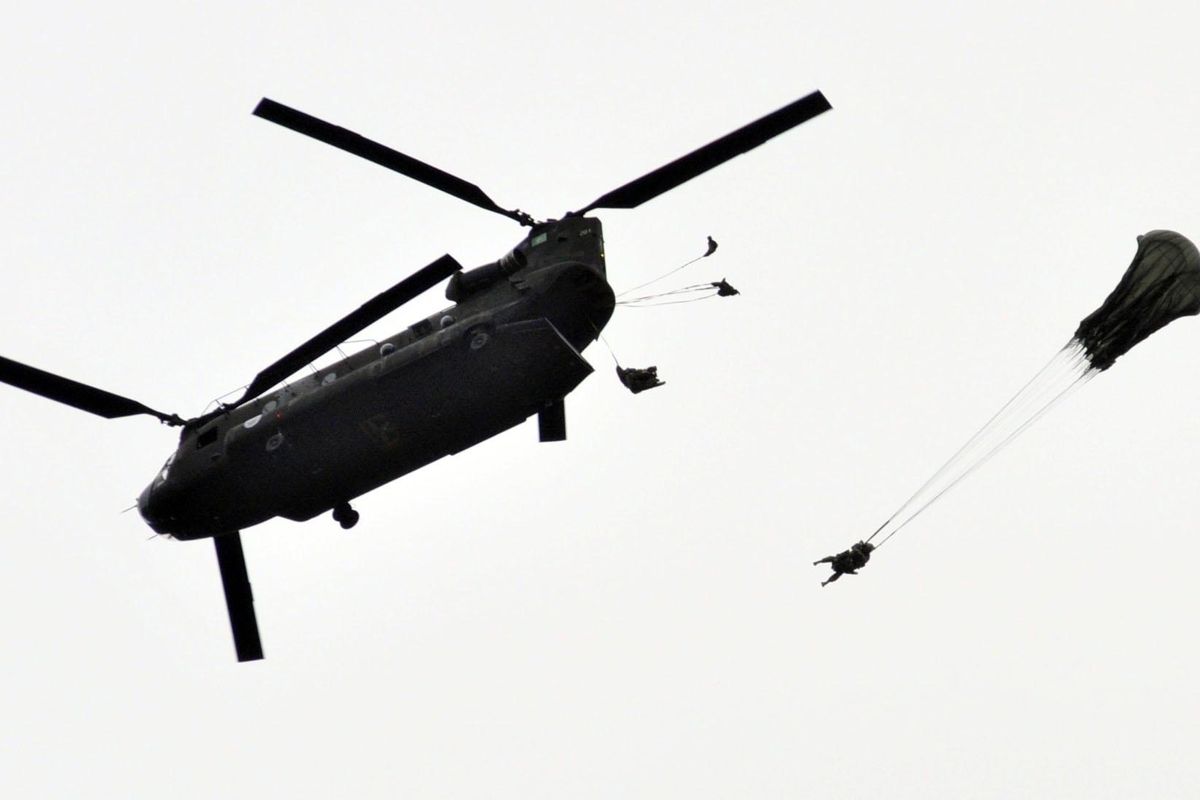Washington National Guard practices earthquake scenario

SHELTON, Wash. – When the Cascadia Subduction Zone ruptures in a massive earthquake and tsunami, the closest the outside world might get to Washington’s Pacific Coast for a week or more is this small logging town on the southwest Puget Sound.
There’s plenty of open space at the old Mason County Fairgrounds, and a long stretch of runway at Sanderson Field that the Washington National Guard expects to survive.
That’s where the Washington National Guard expects to stage its search, rescue and recovery operations for communities like Grays Harbor, Aberdeen and other towns along the coast and throughout the Olympic Peninsula, when the quake happens.
And emergency planners don’t say “if” about a massive 9.0 quake in a seismic fault off the Northwest coast – at least not this week, with more than 20,000 people around the country taking part in what may be the largest emergency planning drill in the nation’s history.
“It could happen right now. It could happen 500 years from now,” Lt. Col. Clay Braun told visiting guard brass and civilian emergency officials from around the country Thursday morning.
As part of the drill, the guard brought some 700 soldiers, airmen and Marines to the fairgrounds and put them through the scenario being followed by military and civilian units around the region – a 9.0 earthquake had struck off the Oregon Coast on Tuesday morning, followed by a tsunami that came ashore from British Columbia to Northern California.
By Thursday morning, units had set up a tent city, a mobile hospital and several operations commands with full communications, unpacked unusual gear and an array of vehicles from ambulances to massive equipment movers, and set about determining what was devastated under the terms of the drill scenario.
Basically, all of U.S. 101, which serves as the main route up and down the Pacific Coast, was wiped out, as well as Interstate 5 from Olympia to Centralia. Shortly before noon they were told a 5.0 aftershock had hit, and they had to react to that.
While some soldiers were involved in search-and-rescue operations, Chinook helicopters dropped paratroopers near Sanderson Field with the equipment necessary to set up a forward communications center. Other guardsmen stood by their equipment to show it off to visiting brass and media.
When more than a dozen members of the guard’s airborne unit parachuted in with communication gear, Chief Warrant Officer James Pierce was briefly deterred from the task of setting up the field operations center by a swarm of reporters who caught him before he could pack up his chute and gear. He had to answer questions about the operations center, but also what it was like to drop in by parachute. “Great,” he said with a grin.
Spcs. Brock Reinecke and Jon Sutter, of the Spokane-based 1041st Transportation Company, were assigned to explain to wandering visitors that their M1088 Tractor Truck and trailer – which makes a long-haul semi look like a Ford F-150 – can haul 22 1/2 tons and do about 60 mph, although not necessarily at the same time. It can’t haul a tank, they said, but it can haul two Strykers on the trailer.
Members of 181st Charlie Medical Company, based in Seattle, showed off the mobile hospital, complete with X-ray and lab facilities. Sgt. Kyle Bouta, a medic who serves as the hospital’s noncommissioned officer-in-charge, said the hospital could treat 40 casualties with the supplies on hand, and as many as 400 if it can be resupplied.
In a natural disaster like the Cascadia quake, they’d expect to see crushed bones, head injuries, damaged joints. “Not the things you see in combat,” Bouta said, like gunshot wounds and blast injuries.
Much of Cascadia Rising concludes Friday, although some related exercises continue into next week.